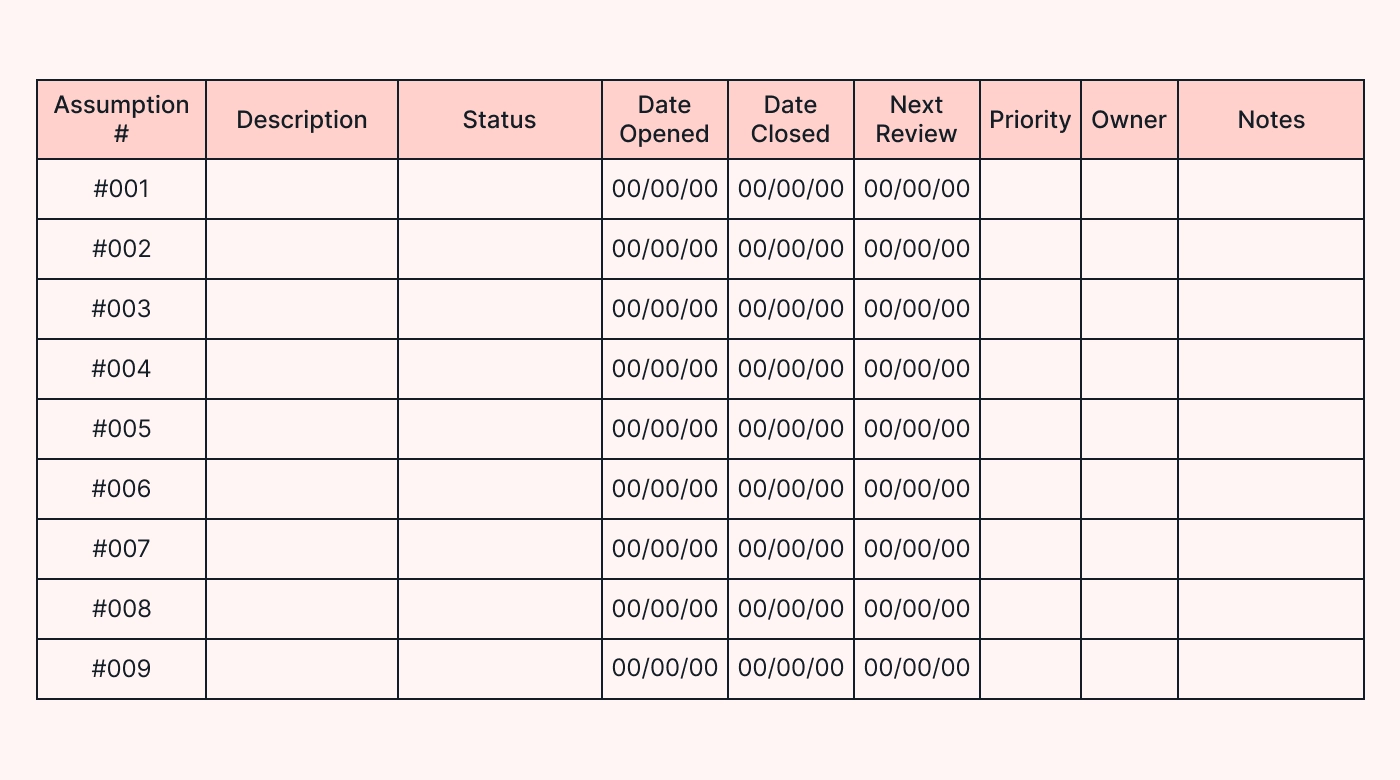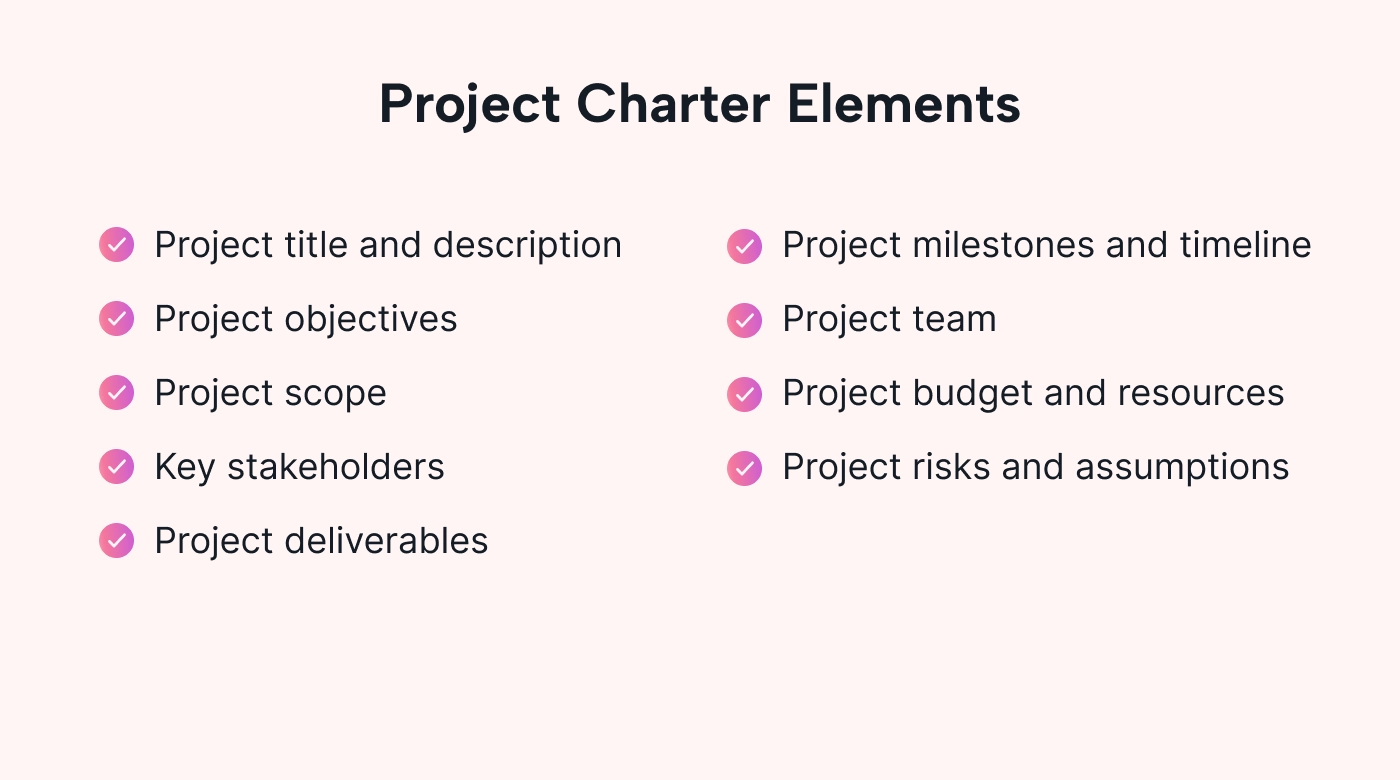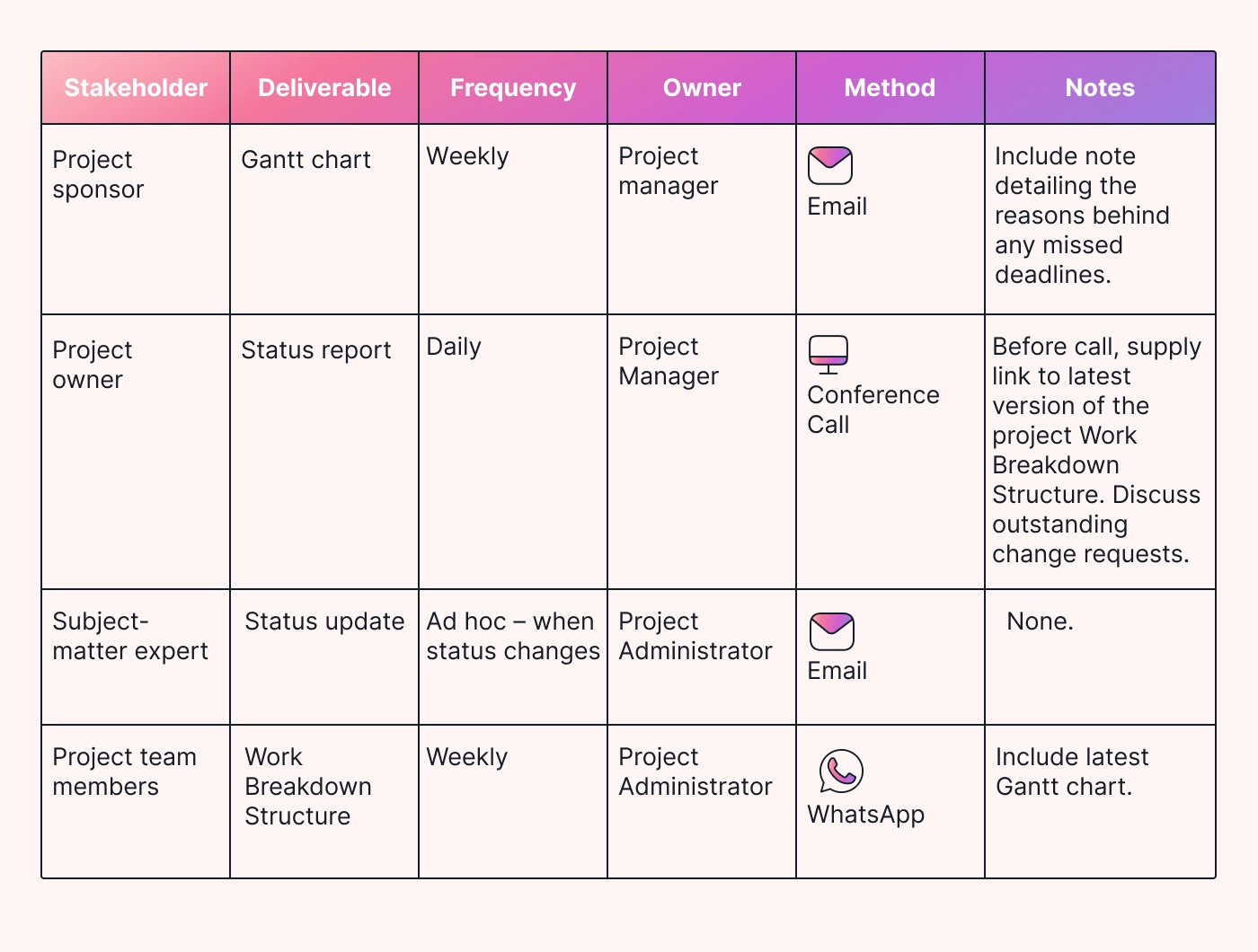According to PBS, the average adult makes about 35,000 decisions per day. But we don’t scrutinize and weigh the pros and cons of every decision. Instead, we have mental shortcuts (or heuristics) that help us move around the world without analyzing everything we do.
We assume things will happen or won’t happen without any actual proof that that’ll be the case.
In our everyday lives, that’s completely fine.
However, for project managers and business owners, false assumptions might be putting your projects in danger.
In this article, we’ll help you:
- Identify assumptions you’re making in your business
- Learn how to document assumptions throughout your project life cycle so they can be avoided in the future
- Treat your assumptions like mini-risks that you can plan for in your project risk management plan
Plus, you won’t want to miss our three insider tips for better project planning (and increasing your chances of project success).
What are project assumptions?
Assumptions in project management are educated guesses about things that could impact your projects. You might accept these factors without knowing if they are true or not.
For example, if you're a marketing agency owner, you might assume that ad costs will remain stable for the next quarter. Or, you might assume that your project team will be available throughout the campaign without knowing if they have any time booked off.
These examples of project assumptions might be correct - or not - but you make them to plan the work and better understand how they could influence your ability to deliver your project on time and meet project budgets.
To better prepare, there are some definitions you should have in your back pocket.
Project assumptions vs. project constraints
Assumptions are the educated guesses you make at the outset of a campaign. These might include expectations about how quickly a client will give you feedback on work you’ve delivered or assumptions about the potential impacts of a particular marketing trend on your campaign's success.
You operate based on these assumptions in the planning phase, even though they may not be guaranteed.
On the other hand, constraints are the limitations you have to work within. These include deadlines, specific project budget caps you can't exceed, and client requests that must be met. Constraints are non-negotiable. They set the boundaries of your project.
Recognizing the difference between what you assume and what's constrained is crucial. You don't want to confuse something that must be accounted for (like a client deadline) with something that may not occur (like someone taking a week off mid-project).
Project assumptions vs. project dependencies
Many project managers start with assumptions to set the initial outline of a project.
You might assume, for example, that your campaign’s message will connect well with your target audience or that you'll be able to produce a promotional video that’ll get a specific number of views and engagements.
Project dependencies are tasks you must complete before moving on to the next step in your project.
For instance, you might need a client’s approval on an ad design before placing the ads. Or one project team might need to finish writing content before your designers can start producing the images.
By planning for these project dependencies from the start, and mapping the critical path, you can make your project timeline more straightforward because you know what needs to be completed in what order.
 |
Project assumptions vs. project risks
Plan with assumptions, but be mindful of project risks.
Project risks could affect your project for better or worse, from external events like environmental factors to internal staffing issues. Some inherent risks to (most) projects revolve around scope creep, resourcing, and project cost estimations.
Confusing assumptions with real risks could have a detrimental impact on your projects. This is why it’s important to identify false assumptions (mini-risks) in your business and have contingency plans for the what-ifs.
How to document assumptions (and keep them front of mind)
Keeping track of assumptions is important, even if documenting assumptions doesn't feel natural in a fast-paced agency. It'll save you time and headaches later. Plus, integrating them into your existing documents can streamline your project planning process.
Keep key information front of mind for your whole project team and key stakeholders. Here's how to do it simply:
A comprehensive project charter
Start every new project with a comprehensive project charter that details the scope, objectives, and key participants.
Include your critical assumptions about market conditions, client feedback timelines, or resource availability so you can be sure you can meet the demands of your project.
This sets clear expectations and allows you to measure actual outcomes against your initial thoughts. And don’t forget to list any potential risks as well.
Include assumptions in your project communication plan
Make sure to note your assumptions in the project communication plan as well. This way everyone involved understands the project's guiding principles right from the start, keeping everyone on track and helping you to avoid misunderstandings (and, hopefully, project failure).
By including your assumptions in important documents like the project plan and project communication plan (sometimes included in the project plan), you help everyone understand the project better, and they can also understand your way of thinking.
Managing common project assumptions
Consider your assumptions carefully to manage your current and future projects more effectively. Here’s how:
Understand and identify the types of assumptions early
There are two categories of assumptions:
- High-level assumptions (key assumptions) are broad and form the foundation of your project management plan. They include the project's scope, budget, staff availability, and chosen methods.
- Low-level assumptions (implicit assumptions) often go unspoken but are vital for day-to-day operations, such as assuming tasks will be completed on time without daily reminders.
Understanding these categories will make it easier to estimate the impact of your assumptions on your projects.
Evaluate the impact of these assumptions
For instance, a tech startup might assume its product will be widely accepted because of its innovation. However, this key assumption could lead to poor sales and wasted efforts without understanding customer needs or competition if the product doesn’t meet market expectations.
While assumptions are essential for planning, not questioning them or validating their accuracy can be a costly mistake. Always review and adjust your assumptions as needed so you can be 100% sure they align with real-world feedback and project progress.
How do you identify common project assumptions?
It might not always be obvious which of the two types of project assumptions you’re dealing with. Heuristics can help you you can identify and navigate these assumptions more easily:
Heuristics are mental shortcuts we use to make informed decisions quickly. Understanding these can help you identify where you might be making unconscious assumptions (which we are all guilty of).
Here are three common types of heuristics:
Anchoring
Sometimes, the first piece of information we hear sticks with us too much.
For example, if you see a marketing agency offering services at a low price on social media, you might stick to that price. You could end up thinking all other agencies are either too expensive or so cheap that they might not deliver good results. It’s good to be aware when that first impression unfairly influences your judgment.
Availability heuristics
This is about making decisions (or an educated guess) based on what comes to mind quickly.
Say you had a recent project that ran into problems because of a specific software. You might start thinking that software will always cause problems, which isn’t necessarily true. Remember, just because something is easy to remember doesn't mean it's likely to happen again.
Representative heuristics
Here, you might make decisions based on stereotypes or outward similarities. For instance, if someone has characteristics you think a successful marketer should have, you might assume they’re perfect for a campaign without checking their skills or experience. Be careful not to let these superficial traits be the only reason for your choice.
By becoming aware of these mental shortcuts, you can better identify when making assumptions that might not be based on the full picture. Always challenge your initial thoughts by looking for evidence and considering other possibilities. This approach reduces the risk of project mishaps and enhances your decision-making process, making your business more resilient and adaptable.
Take control with a project assumption log
Introspective work is important, but project documents are vital for all team members and stakeholders to work together.
A project assumption log acts as a centralized list of project assumptions that everyone can access in one place.
 |
Project assumptions logs can help you and your team stay aligned and address potential issues before they become major problems. Here’s how:
Keep your assumptions clear and detailed
When documenting assumptions, be as specific as possible. For instance, instead of saying, "Materials need to be delivered on time," specify, "The graphic designer will deliver all required visual assets by [specific date].”
This helps ensure that you can keep to your project schedule (and this level of detail helps everyone understand exactly what’s expected and by when).
Use a simple status system to track your assumptions
It can be easy to lose track of assumptions, especially in complex projects. Use a status label such as Open or Closed to keep tabs on each assumption's current state. This helps you quickly see which assumptions still need attention.
Set and track key dates
Include important dates like when an assumption was made (Opened), when it was resolved (Closed), and when it should next be reviewed (Next Review). These dates help you manage the timing of each assumption and ensure they are addressed promptly.
Prioritize your assumptions
Different assumptions will come up during the project life cycle. However, not all assumptions will have the same level of urgency. Categorize them as high, medium, or low priority to help your team understand which issues need immediate attention and which can wait.
Assign an owner for each assumption
Assign a team member responsible for each assumption. This person will track the assumption's progress and make any necessary adjustments or backup plans. Having a clear owner makes sure that each assumption is actively managed and not overlooked.
Remember, documentation is just the beginning
Documenting your list of project assumptions isn’t the end of the process — it's ongoing. Regularly review your assumptions log to answer questions like:
- Has the assumption been resolved?
- What impact has it had on the project so far?
- What actions have been taken?
- Have any new potential risks emerged?
- Is this becoming critical to project success?
This proactive approach keeps your projects agile and responsive to changes and challenges as they arise.
Three pro tips to manage assumptions for better project outcomes
1. Keep questioning and updating your guesses
- Think of your project's assumptions like a draft that needs constant revising.
- Make it a habit to double-check and tweak these guesses as the project progresses regularly. By grounding your assumptions in real-world data and feedback, you're not just guessing , you're adapting to reality.
- By reviewing your previous projects with current assumptions, you can keep your project planning much sharper.
2. Bring everyone into the brainstorm:
- When mapping out your assumptions, pull up more chairs to the table.
- Getting input from key stakeholders to the experts in the trenches can shine a light on blind spots and enrich your project’s foundation with a mix of perspectives.
- This team effort not only digs up hidden assumptions but also checks their pulse, making your planning efforts more solid.
3. Treat assumptions like project risks and plan for them:
- Imagine each assumption is a potential little gremlin that could stir up trouble.
- Build a series of response plans that not only spot these gremlins early but also have a strategy ready to tackle them if they start causing chaos.
- By preparing for what might go sideways, you're less likely to be caught off-guard, helping you steer your project more confidently.
- Use project management tools like Motion to manage tasks and action items that come from planning so nothing gets missed.
Manage your project assumptions with Motion
Thinking clearly and communicating well are key to assumption management. The clearer and more unbiased your assumptions are, the better your communication will be.
But you don’t need to manage it all yourself.
Identify your assumptions and define your tasks, then let Motion’s Happiness Algorithm do the rest.
Motion helps keep your projects on track by auto-assigning tasks to your optimal schedule.
Plus, by staying focused, you can stop unnecessary meetings and information overload from swaying your judgment.
But don’t take our word for it.
Try Motion FREE and experience 137% more productivity - today.

Haylee is a versatile writer with ten years of experience. With a background in marketing and writing for large SaaS companies, Haylee brings her passion for the written word to diverse projects ranging from blog posts and ebooks to direct marketing campaigns.







